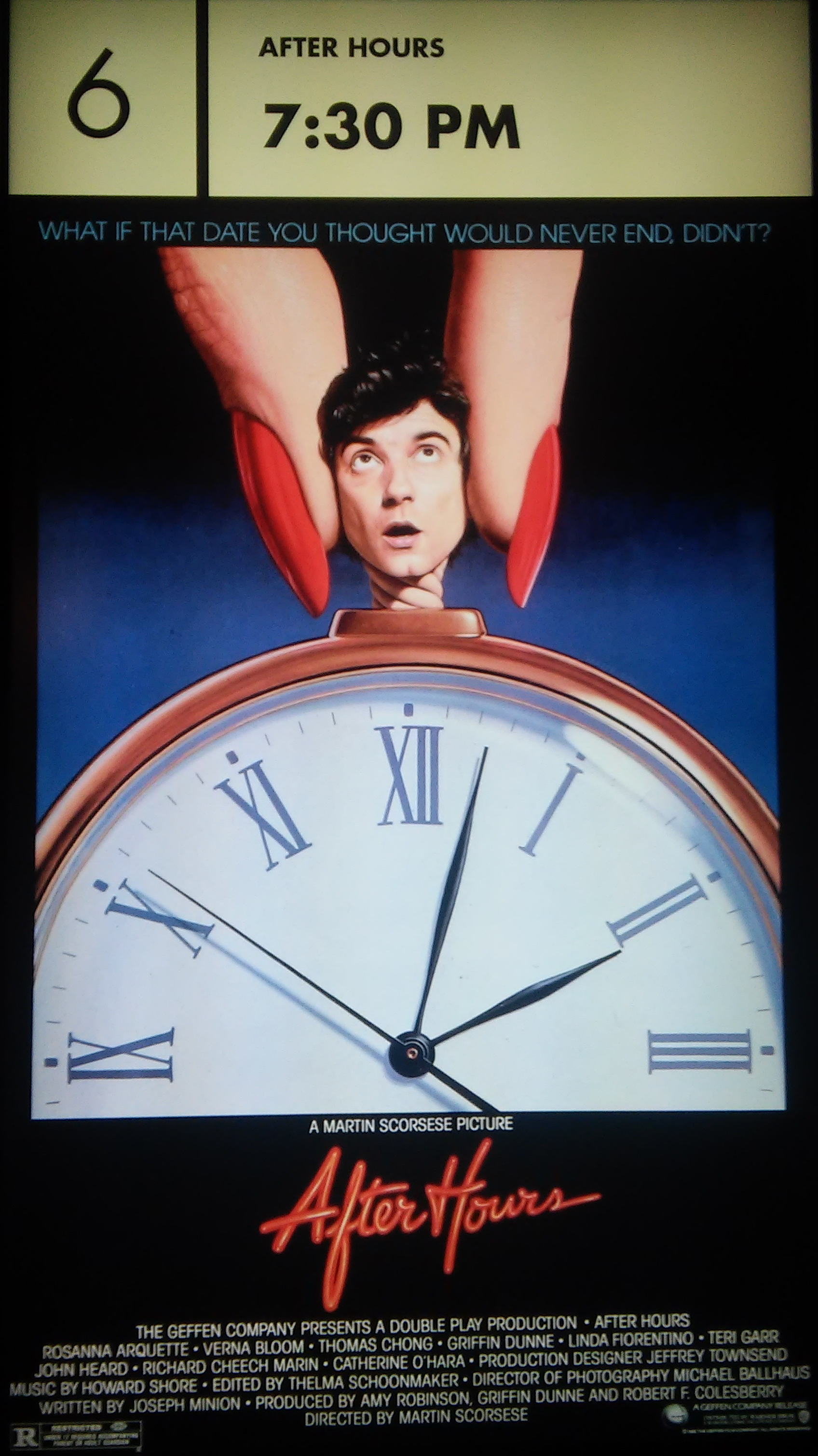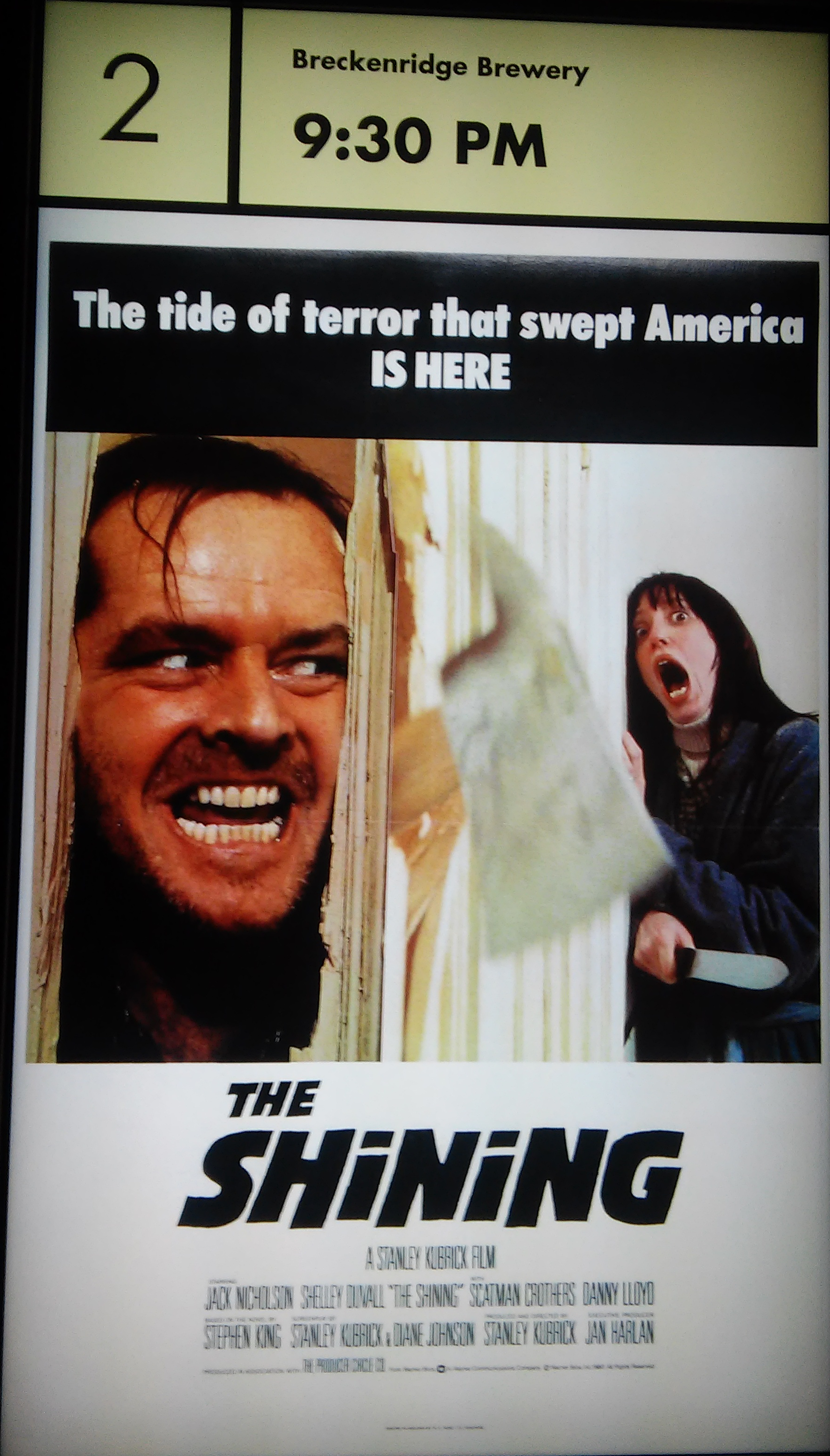Continued from Part 1…
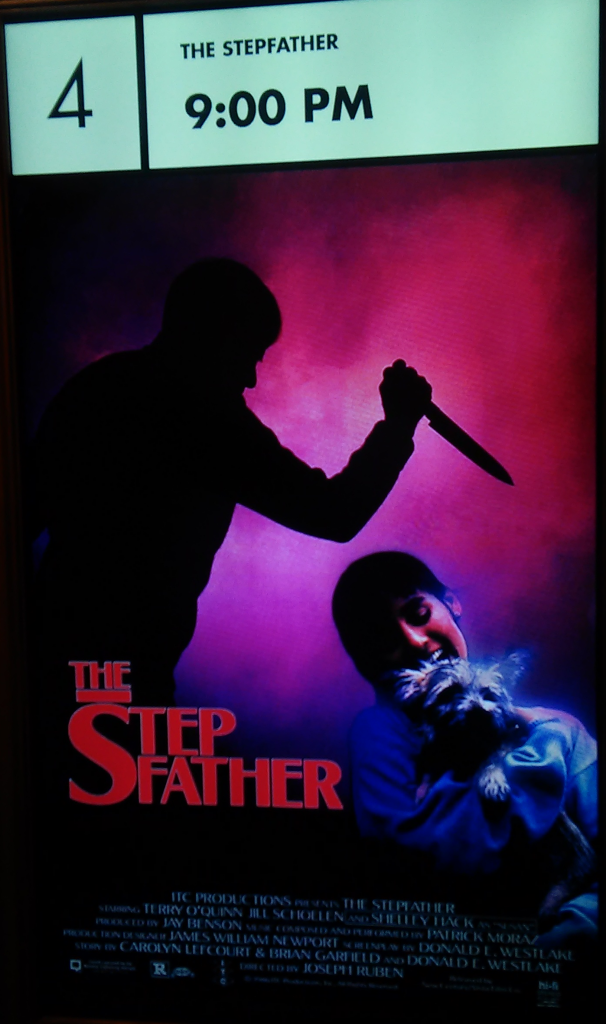
‘The Stepfather’ (1987)
With the proliferation of PG-13 “horror” films these days, it’s almost hard to imagine a movie actually adding things to justify an R-rating, but back in the day the producers of ‘The Stepfather’ saw a PG-13 rating as a potential marketing problem. Really though, the whole movie was kind of a marketing problem. As you can gather from the poster, this got pushed out as something of a slasher movie, but it’s really more of a Hitchcockian thriller, like if ‘Rear Window’ and ‘Psycho’ had an Eighties baby (not that it’s Hitchcock-level quality, but the director apparently saw it as more of a dark comedy, which is a lens Hitchcock viewed much of his own work through).
We already know who the bad guy is from the very beginning, so the tension doesn’t come from the audience discovering who the killer is, but rather the characters in the movie. It really only works as a product of its time (why they even tried to remake it and update it is beyond me), but it’s effective, and it still holds up pretty well today. despite the generational gap.
Terry O’Quinn’s performance is unquestionably the centerpiece of the film. He’s on his A-game as a very disturbed individual trying to see if he can finally hold it all together, but the supporting actors, particularly Jill Schoelen, hold their own as well.
It might get a little corny at times, but for a horror/thriller, ‘The Stepfather’ makes a solid movie night pick.
Rating: ★★★½
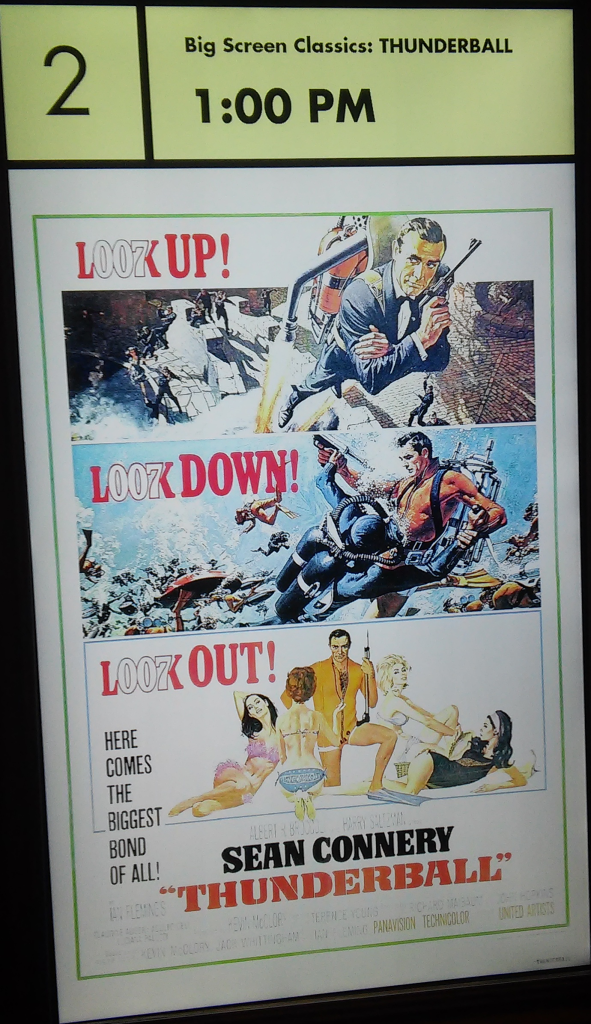
‘Thunderball’ (1965)
“There’s a lot of movie in that movie.”
It’s a true statement of pretty much every Bond film since ‘Goldfinger’, but it’s perhaps most true of ‘Thunderball’. In fact, there’s so much movie here it’s almost exhausting: you’ve got airplanes, you’ve got nuclear weapons, underwater combat, fast cars, deadly sharks, multiple bombshell women, fast boats, world extortion, electrified conference room chairs, Bahamian street festivals, an actual jetpack, Tom Jones singing, and a peeing dog.
All that said, while you do feel its length, I appreciate the producers’ effort to make a real crowd-pleaser. The underwater scenes in particular, from both a visual and technical perspective, are overwhelmingly impressive, even now (“it’s so dense, every single image has so much going on…”).
Now, I’ll be honest, I actually like the remake (‘Never Say Never Again’) better, but only because the interplay between Sean Connery and Klaus Maria Brandauer is so much fun, at least in my opinion. On the whole, I’d say ‘Thunderball’ remains the superior film (especially in the Bond Girl department). Plus, ‘Thunderball’ might be the most influential spy movie on pop culture in general (it’s still the highest grossing Bond film when you adjust for inflation).
Rating: ★★★★☆
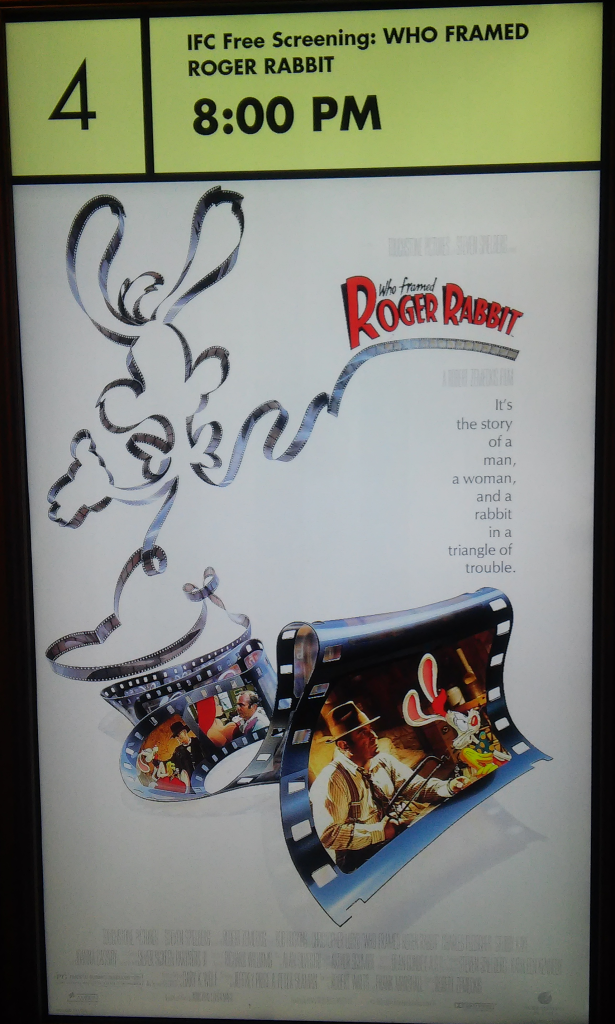
‘Who Framed Roger Rabbit’ (1988)
Boy, that Bob Zemeckis sure had a strong foothold on the mid to late Eighties, didn’t he?
I think computers have made us numb to the appreciation of animation, but back in the day (and even as recently as 2004) it was a highly labor-intensive process. It may not have been the first and it certainly wasn’t the last, but I personally don’t know of another film that blends live-action and traditional animation to the degree that ‘Roger Rabbit’ does, and in that sense alone it is an incredible triumph of cinema.
Perhaps lost on today’s audiences is the wrangling of so many different characters from different (and, traditionally, very competitive) animation studios to be in one movie. For people who grew up watching the old cartoons, it must’ve been mind-blowing at the time to see Bugs Bunny, Mickey Mouse, Felix the Cat, and Woody Woodpecker all in the same motion picture (not to mention the dueling piano scene with Donald Duck and Daffy Duck actually sharing the screen together).
It might not be in the AFI Top 100, but this is a seminal movie nonetheless, and, like so many other Eighties “kids movies”, it will traumatize your children (seriously, I still don’t know if I’m over that ending).
Rating: ★★★★☆

‘Full Metal Jacket’ (1987)
Thirty years after making one of the best war (and anti-war) films of all time in ‘Paths of Glory‘, Stanley Kubrick unleashed himself on a whole new generation of moviegoers with ‘Full Metal Jacket’. This is another classic that I can’t say too much about that hasn’t been said already, the most obvious being that I can’t believe it was only nominated for one Academy Award, so I’ll praise a couple of things that I think have been underrated over the years.
First of all, most people talk about R. Lee Ermey and Vincent D’Onofrio, and that’s fine, but Matthew Modine as Pvt. Joker (you know, the protagonist of the film) gives a really good performance as well. One of my favorite moments is the “Virgin Mary” scene, when he’s the first Private to actually stand up to Gny. Sgt. Hartman and earns himself a promotion to squad leader. It’s a very emotional scene with a lot of shouting, yes, but you never feel like, “Oh, they’re just performing.” No, they’re in it, and he’s in it in particular.
Secondly, did you know this entire movie (outside of some archive footage of a Parris Island graduation) was filmed in England? England! I bet you thought they went to the Philippines or Taiwan or at least somewhere in Asia, but no, they filmed a movie that takes place in South Carolina and Vietnam entirely in jolly old England! If that’s not “movie magic”, I don’t know what is.
It’s a very dark movie (but surprisingly funny at times), for sure, but if I was making a list of ten war films everyone should see (regardless of your feelings on war), I’d be hard pressed to leave this one out.
Rating: ★★★★½
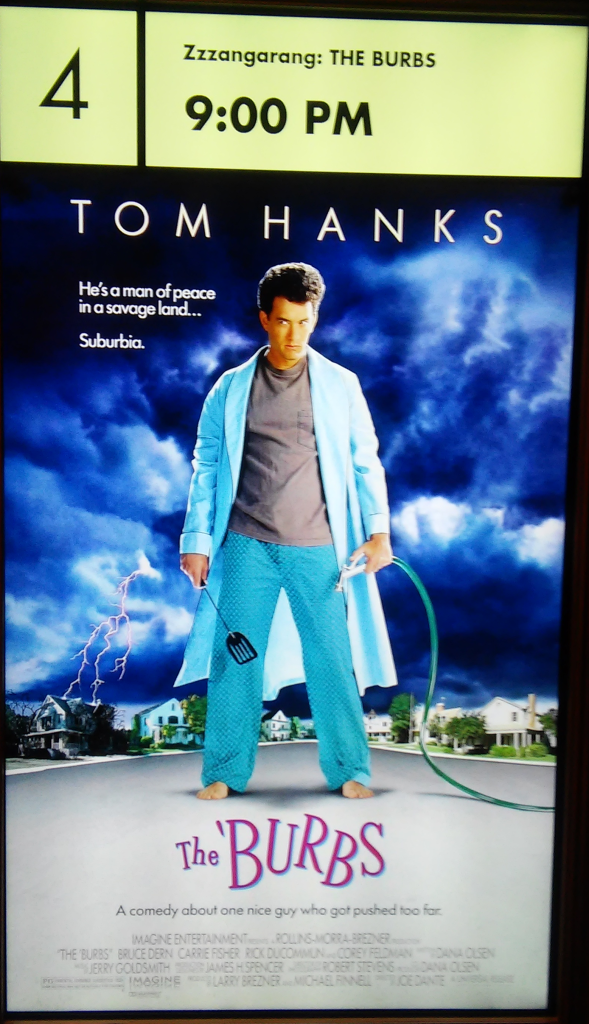
‘The ‘Burbs’ (1989)
For some reason I keep thinking I’m not much of a [New Jersey’s own] Joe Dante guy, but after looking at his filmography again, I’m not sure that’s true. There must be someone else I keep confusing him with.
Anyway, I really enjoyed this movie. It’s a very funny blend of mostly comedy with horror elements. The wonderful ensemble cast is what truly makes it: you’ve got Tom Hanks as the stressed-out everyman who just wants to relax at home for his vacation; Carrie Fisher as his dutiful wife; Rick Ducommun as the wise-cracking sidekick and general instigator; Bruce Dern as the wily and paranoid ex-military man; Wendy Schaal as his wife (and neighborhood eye-candy); Corey Feldman as the teenager next door; and Henry Gibson, Brother Theodore, and Courtney Gains as the mysterious Klopeks (not to mention cameos from Dick Miller and Robert Picardo, because this is a Joe Dante film).
For anyone who’s ever had strange neighbors you wanted to avoid at all costs, you’ll definitely relate (and probably feel justified in that thinking).
If you’ve not seen it, definitely check it out, especially around Halloween time.
Rating: ★★★★☆
Continued in Part 3…
(1985)
(1980)

